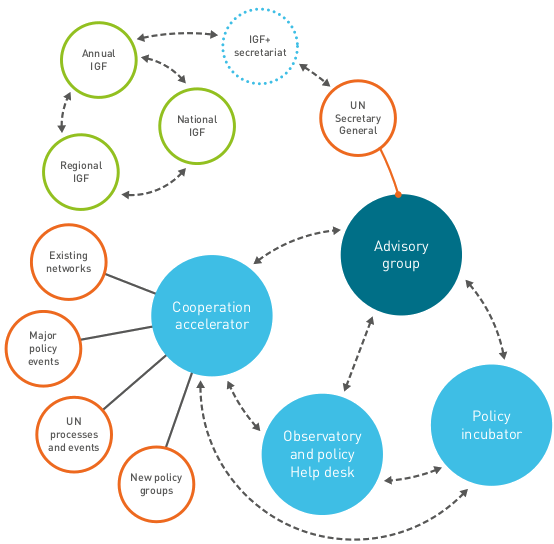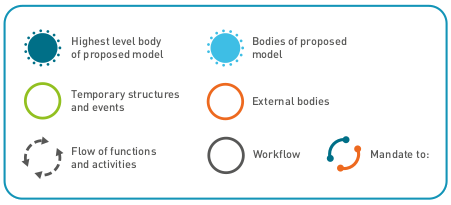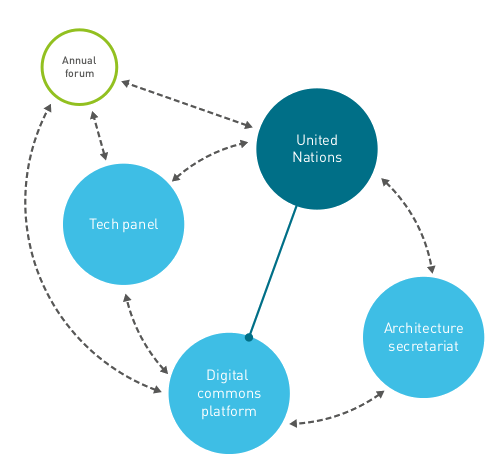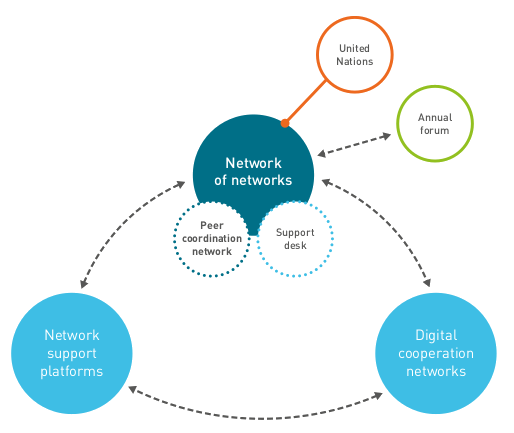
The United Nations’ Internet Governance Forum (IGF) moderates discussion and publishes guidelines for public and private policy-makers working in cyberspace. Governments, international organizations, businesses, and those representing the interests of civil society are invited to find common ground in a “multi-stakeholder” structure.
The stakeholders’ dialogue on the future of internet governance was initiated by the United Nations’ Secretary-General over four session from June 5th to June 6th. I attended the final session on the 6th. We evaluated three scenarios for the future of internet governance proposed by the High-Level Panel on Digital Cooperation.The panel is concerned about a broad range of issues on the internet. As constituted, the member’s top issues include: 1) cybercrime, cyberterrorism, cyberconflict, 2) data ownership and governance, 3) access to the internet and digital technologies, 4) bias and transparency related to algorithms and artificial intelligence, 5) disinformation and online freedom of expression.
The models are quite abstract. The models do not address specific issues such as how to ensure privacy on the internet or how to mitigate the fragmentation of the internet. Rather, they are different structures to help network citizens work towards more egalitarian solutions.
Model 1
Internet Governance Forum+ (IGF+)
This model reflects the current structure of internet governance and the United Nations, with some enhancements.


The advisory group will help coordinate efforts at the IGF. Some past efforts moved slowly and lacked direction; the additions of a policy incubator and a cooperation accelerator will help address this. The observatory and policy help desk will help effectively communicate clear guidelines - another criticism levied against the current IGF.
The heavy structure of the IGF+ will likely fall short when identifying existing trends and developments on the internet. However, it provides facilities to help facilitate partnerships around specific issues and coordinate policy outcomes for parties with different interests.
Model 2
Digital Commons Architecture (DCA)

This simplified structure only includes three bodies, a tech panel, a digital commons platform, and an architecture secretariat. They coordinate through the existing infrastructure at the United Nations.
Today’s more mature internet has a common heritage to draw from when planning for the future. The argument of the DCA is that planning can be a more organic process without the burden of the existing IGF infrastructure and norms. Furthermore, this model will likely be more responsive to cultural movements and changes in technology than the IGF+ model.
Without more formal bodies, we worried about resolving conflicts or addressing crises online. I am specifically worried about States escalating from internet-born conflict to actual military engagement. This model also offers little protection for disenfranchised voices. How does it ensure inclusively?
Model 3
Distributed Co-Governance (CoGov)

The flattest model. Two bodies, network support platforms and digital cooperation networks, coordinate through a network of networks. The network of networks model has worked in the past: governments, institutions, and citizenry want to connect to the internet through their network because of the massive opportunity it provides.
I like this model because it seems that local networks can stay local and serve local needs. They still must comply with the norms of the overarching network (the internet) if they want to connect. However, if the incentives aren’t aligned, it can also lead to further fracturing of the internet. This is the trade-off.
- Global issues (the United Nations) can be resolved on the network of network level
- Local issues are resolved locally
- Glocal issues (global local) are deliberated between parallel network support platforms and digital cooperation networks, establishing agreed upon norms without a parental intermediary.
These can be slow processes that are ill-equipped to handle crises. Norms can take quite some time to surface.